

CarExpert.com.au
The CarExpert team's favourite cars of 2025
3 Days Ago
A lot of small crossovers are just higher-riding hatchbacks anyway, so why not just get an OG hatchback like the Mazda 3?

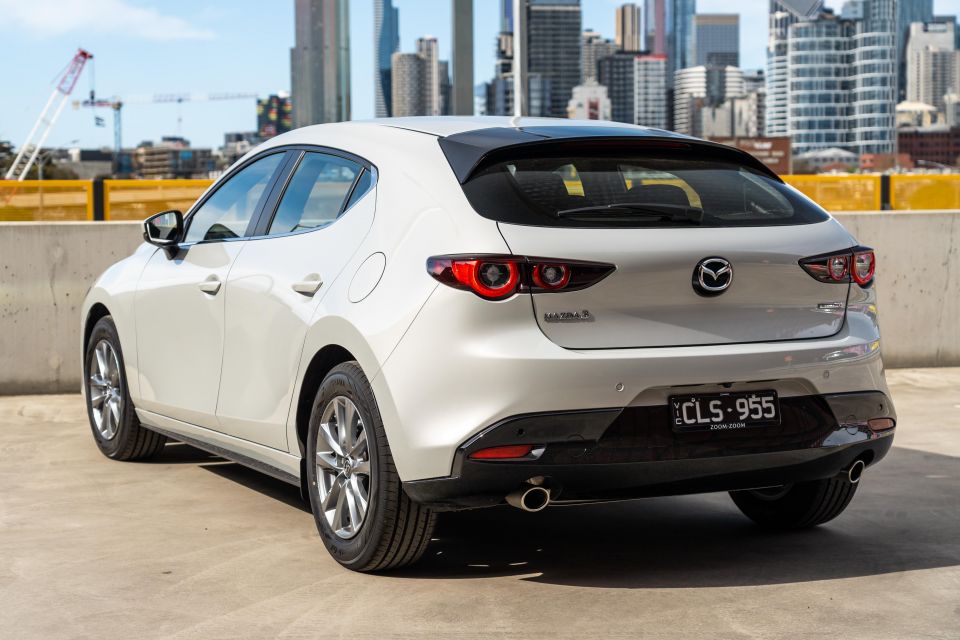

Quickly see how this car stacks up against its competition. Select any benchmark to see more details.
Where expert car reviews meet expert car buying – CarExpert gives you trusted advice, personalised service and real savings on your next new car.
The Mazda 3 isn’t the hot seller it used to be – is this just because small cars in general have declined in popularity, or is there another reason why?

Could it be the revised packaging of the current, 2019-vintage model, where Mazda arguably sacrificed some practicality on the altar of style?
Then there’s some tough competition from within Mazda’s own showroom. Despite higher prices, the closely related CX-30 crossover overtook the 3 in sales last year. Buyers seem to be willing to pony up the extra dough for the 3’s higher-riding, more practical sibling.
Mazda has taken the knife to the local 3 range for 2024, killing all manual transmission and mild-hybrid options. It has also made some tweaks to the features list and massaged the base engine.
There’s no longer a Mazda 3 available for under $30,000 before on-road costs, but the base G20 Pure is still a particularly well-equipped model – if maximum space for minimum spend isn’t your priority.
The Mazda 3 range opens at $30,320 before on-road costs for the G20 Pure. It’s the same price regardless of whether you choose the hatchback or sedan body style.
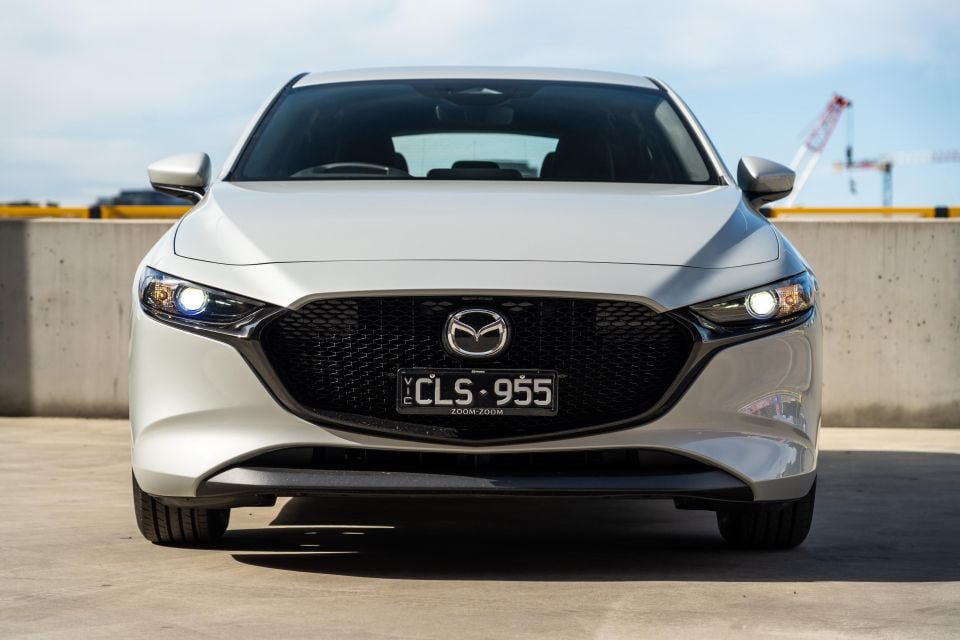
Based on a Sydney postcode, you’re looking at a drive-away price of $34,365.
While the likes of the Ford Focus and Renault Megane are dead, there are still plenty of small cars in Australia, numerous survivors like the Honda Civic and Volkswagen Golf have lost their most affordable variants.
That leaves a small pool of direct competition for the entry-level Mazda 3 G20 Pure.
Key rivals include:
All prices exclude on-road costs, unless otherwise stated
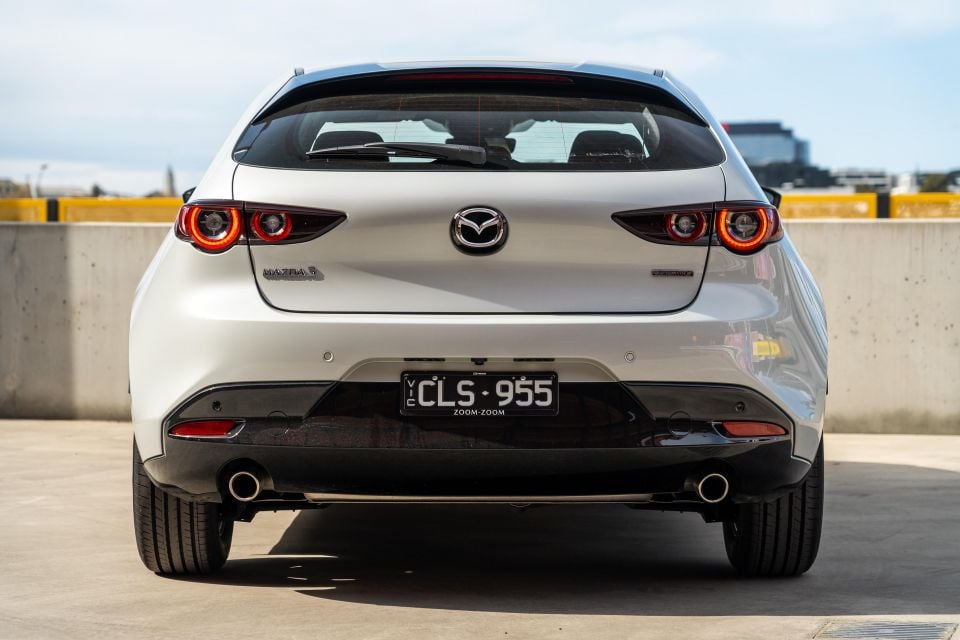
There’s also a fresh rival in the shape of the MG 5 sedan, which is priced from $28,990 drive-away in top-spec Essence guise.
The most affordable automatic CX-30, also called the G20 Pure, rings up at $31,610 before on-roads. However, an update is expected this year, and a price increase of some description seems inevitable.
Buy your new car without the stress. It's fast, simple and completely free.

Great service from Travis and team, second time I have used this business would not hesitate to recommend them to anyone
Craig C.
Purchased a Ford Ranger in Sunshine Coast, QLD
CarExpert helped Craig save thousands on his Ford Ranger, now let us save you on your next new car.
Find a dealIn terms of material quality, the Mazda 3 is the best in its segment. In terms of packaging, it sits much further down the pecking order.
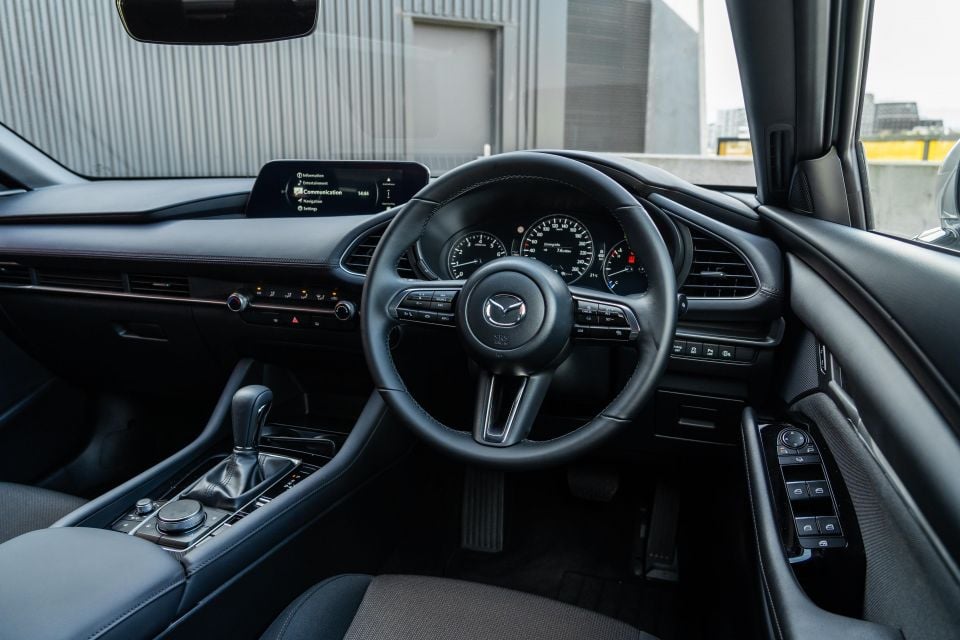
This is quite a plush cabin, particularly when you consider this is an entry-level small car from a mass-market brand.
The entire dashtop is finished in soft-touch trim, which isn’t that unusual in this segment, but the presence of stitched, softly padded trim along the sides of the centre console certainly is. There are luxury-branded small cars that don’t have this detail.
Only the very lowest reaches of the dash and doors feature hard plastic, and the leatherette trim on the dash is remarkably soft.

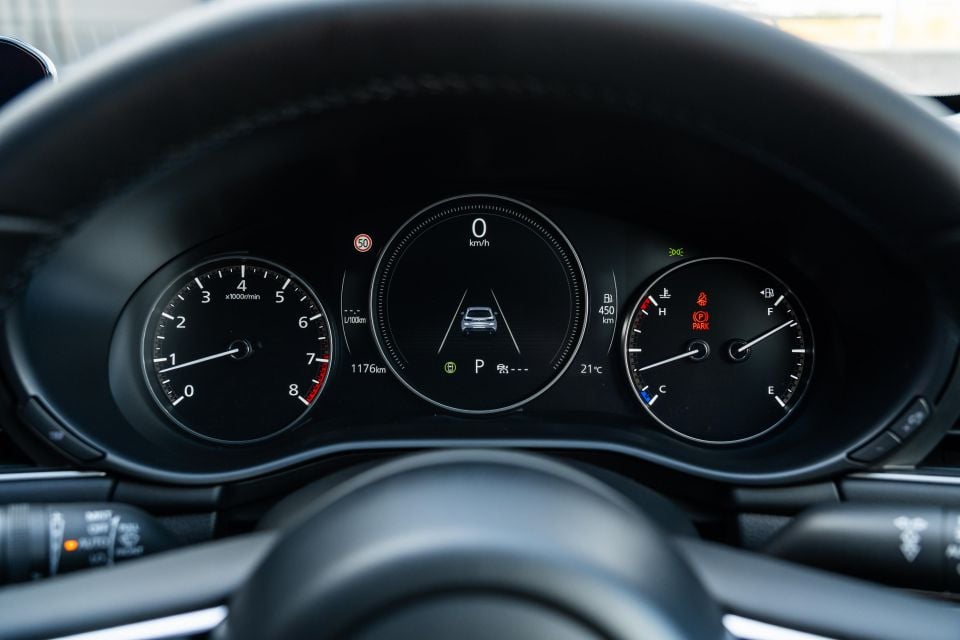
The stitching elements further elevate the cabin, while the cloth upholstery on the seats has a nice look and feel, and the leather-wrapped steering wheel is tactile.
Then there are the simple, clever inclusions like a light on the wiper switch that indicates whether you have it in auto (i.e. rain-sensing mode).
The dashboard is simple, with the infotainment display mounted high up on a recessed platform, and the centre stack consisting of a simple bank of air-conditioning and heater controls.
These controls feature actual buttons and dials, which are attractive and feel good.
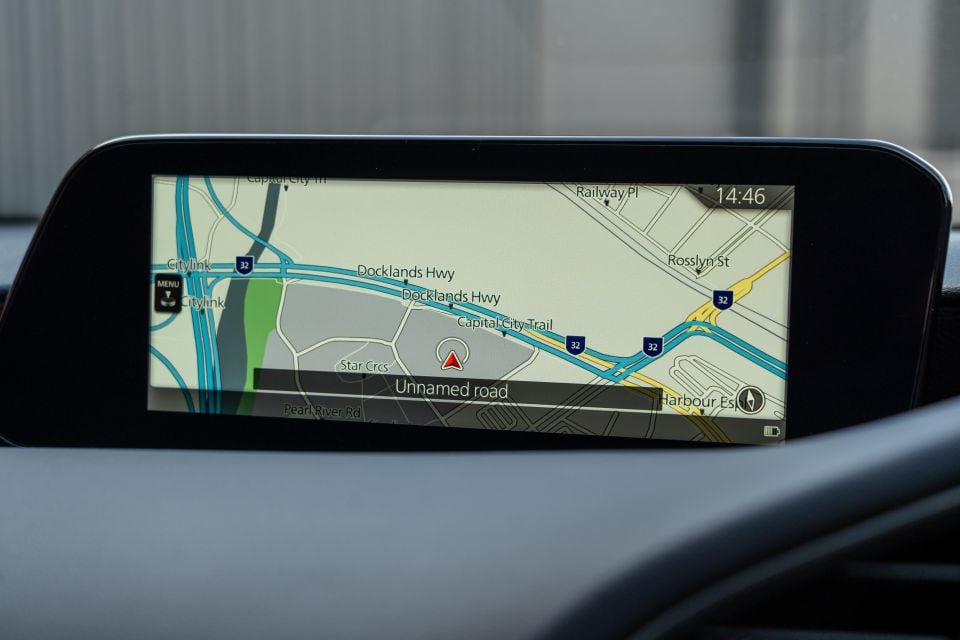

The infotainment screen is situated within the driver’s sight line, and is easily navigated using the rotary dial on the centre console.
Unlike pricier 2024 Mazda 3 models, however, the G20 Pure sticks with a carryover 8.8-inch screen that lacks touch functionality and wireless connectivity for Apple CarPlay and Android Auto.
Not having a touchscreen is no big deal when it comes to adjusting settings or using the factory navigation, but it’s a real pain when you want to use smartphone mirroring. You can add a 10.25-inch screen with touch functionality for smartphone mirroring however, by selecting the optional Vision Package.
In addition to the rotary dial, the centre console includes a dial for volume adjustment that’s easily reachable by the front-seat passenger, as well as a neat metallic control for selecting Sport mode and controls for the electronic parking brake and auto hold functionality.
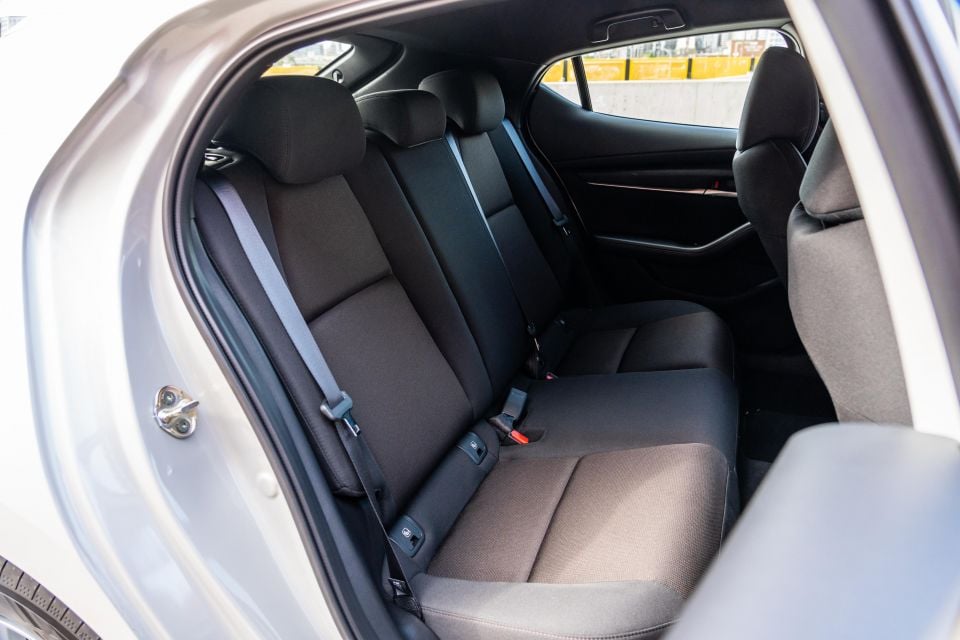
The controls are all intuitive, though we have to mark down the centre console for its extensive use of gloss black trim, which shows dust and smudges all too easily.
The Mazda 3 may seem downright luxurious up front, but in the back it’s a little more spartan. There are no air vents or charge outlets in this base model, and it feels a bit dark and confining. If you want air vents and a fold-down armrest, you’ll need to step up to the G20 Evolve.
At 180cm tall, I can sit behind my own driving position without having my knees pressed against the front seatback, but my head just brushes the roof.
A driveline hump eats into legroom for the centre-seat occupant, while all three passengers in the back will find it a bit gloomy back here due to the high beltline.
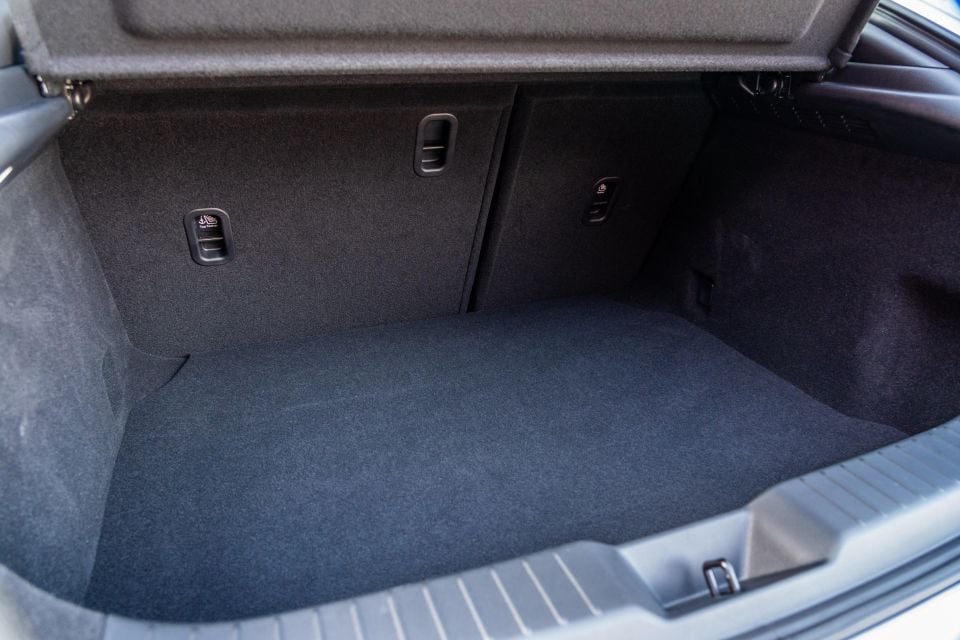
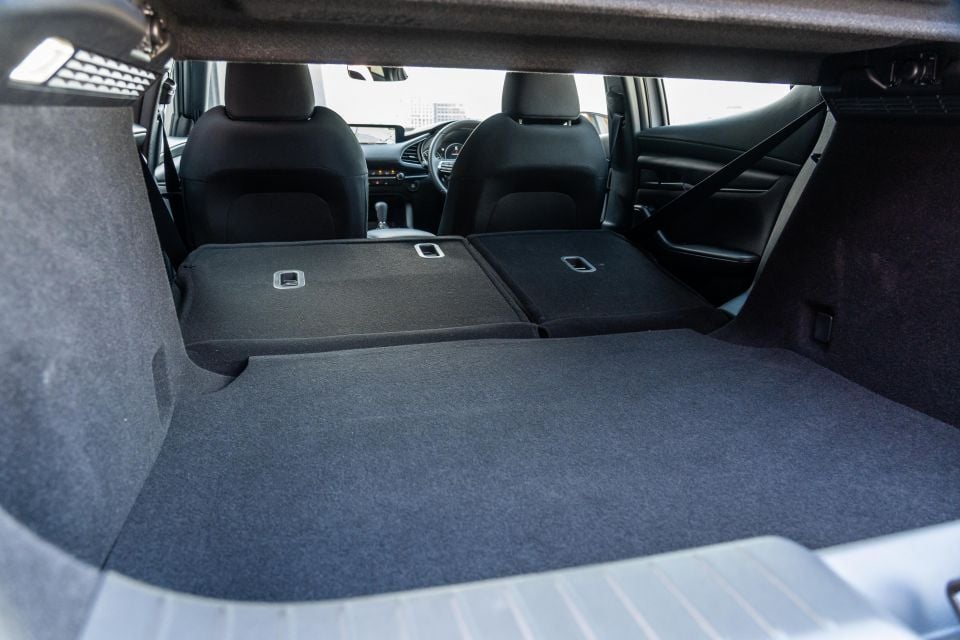
The Mazda 3 Hatch has a claimed 295L of boot space, and under the boot floor sits a space-saver wheel. Mazda doesn’t quote a figure with the rear seats folded.
While that figure is better than the Corolla Hatch’s pitiful 217L (333L in models without a spare wheel), it’s worse than the Golf (374L), i30 (395L) and Cerato (428L).
The G20 Pure’s 2.0-litre naturally aspirated four-cylinder petrol engine now receives cylinder deactivation and “other improvements to the combustion process”, claimed to lower CO2 emissions without any compromise to performance or drivability.
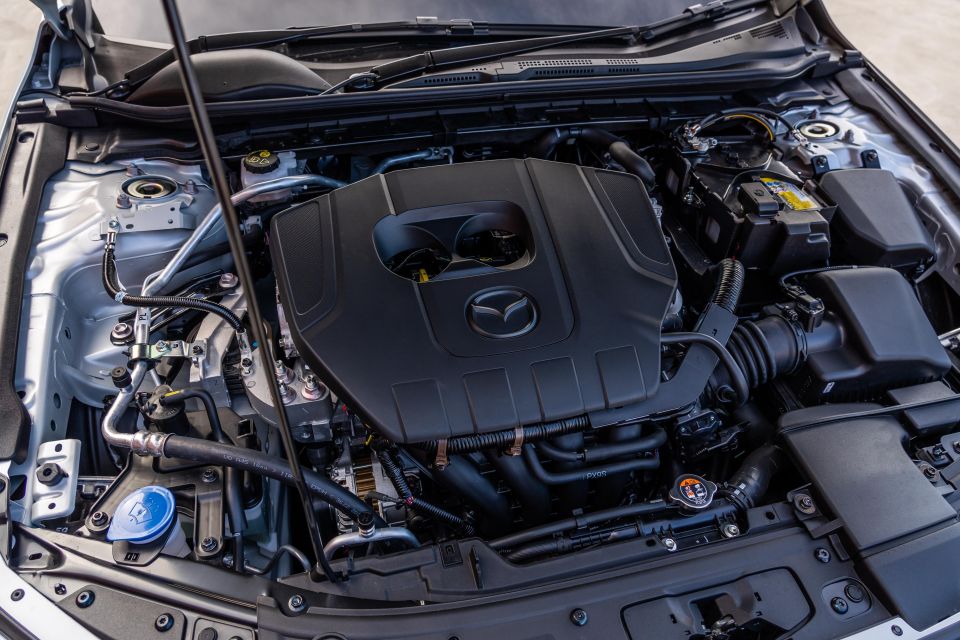
It produces 114kW of power and 200Nm of torque, and is mated with a six-speed automatic transmission.
The Japanese carmaker claims fuel consumption for these G20 models has improved by 5.0 per cent, with the hatch claimed to consume 5.9L/100km on the combined cycle and the sedan claimed to consume 5.8L/100km.
Over a loop comprising a mix of inner-city, suburban and highway driving, we averaged 7.8L/100km. This improved to 7.3L/100km over the course of a week. The 3 runs on 91 RON regular unleaded fuel.
The G20 Pure’s outputs and claimed fuel economy stack up well against rivals. The i30 has similar power and torque (120kW/203Nm) but worse fuel economy (7.4L/100km); likewise the Cerato (112kW/192Nm and 7.4L/100km).
The Corolla has it beat – just – with 126kW and 203Nm. Its combined cycle fuel economy is 6L/100km, but Toyota offers a fuel-sipping hybrid version that soundly beats the Mazda in economy.
The Mazda 3 is noisy on startup, but it quietens quickly and its engine note is hardly objectionable when you’re on the go.

It can sound a bit gruff when idling, however, but idle stop/start will activate if you press the brake pedal firmly. The stop/start system also engages smoothly.
There’s a bit of tyre roar at highway speeds on coarse-chip surfaces, but otherwise the cabin is quite well-insulated from the outside world.
As expected for the zoom-zoom brand, Mazda has gone for a sporty feel with the 3’s dynamics.
The steering is a bit heavy at low speeds, perhaps a touch too heavy for a mainstream small hatch. The flipside to that is the steering is weighty and communicative when you’re on the move, and that gives the Mazda 3 a dynamic feel.
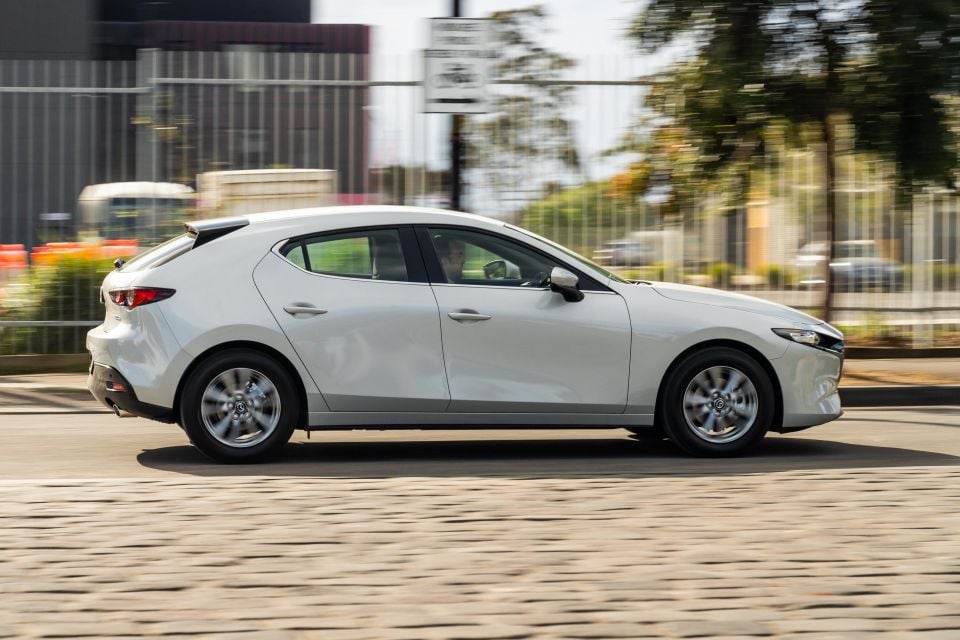
The Mazda 3 feels nicely tied down on a winding road, with minimal body roll and sharp turn-in.
The ride is firm without being harsh, but – perhaps due to the torsion-beam rear suspension – the Mazda 3’s rear feels a bit fidgety, even on smoother surfaces.
Some things like recessed manhole covers and larger ruts also aren’t absorbed as well as expected, and the rear does clomp a bit. Overall, it’s not overtly stiff but it needs some finessing.
The 2.0-litre seems a little lackadaisical at first, but I warmed to it over time. The six-speed auto doesn’t have the smoothest shifts but it generally makes the most of the engine.
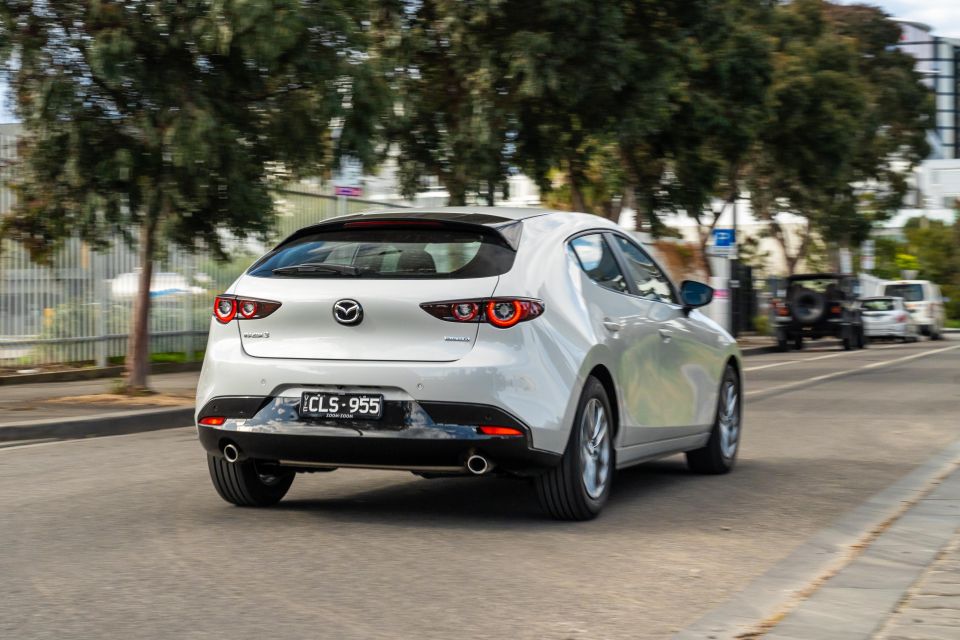
However, I would find myself flicking it to Sport mode to make gaps in traffic; you can also manually shift, though there are no paddles in the G20 Pure.
Despite the mechanical changes made to the 2.0-litre, the base engine doesn’t feel particularly different in operation.
Would the Mazda 3 be more entertaining with a six-speed manual, or a more powerful engine? Yes, though you can’t get the former anymore in Australia and the latter costs more. For a base engine, the 2.0-litre is a decent mill.
The base G20 Pure is quite well-equipped for an entry-level small car.
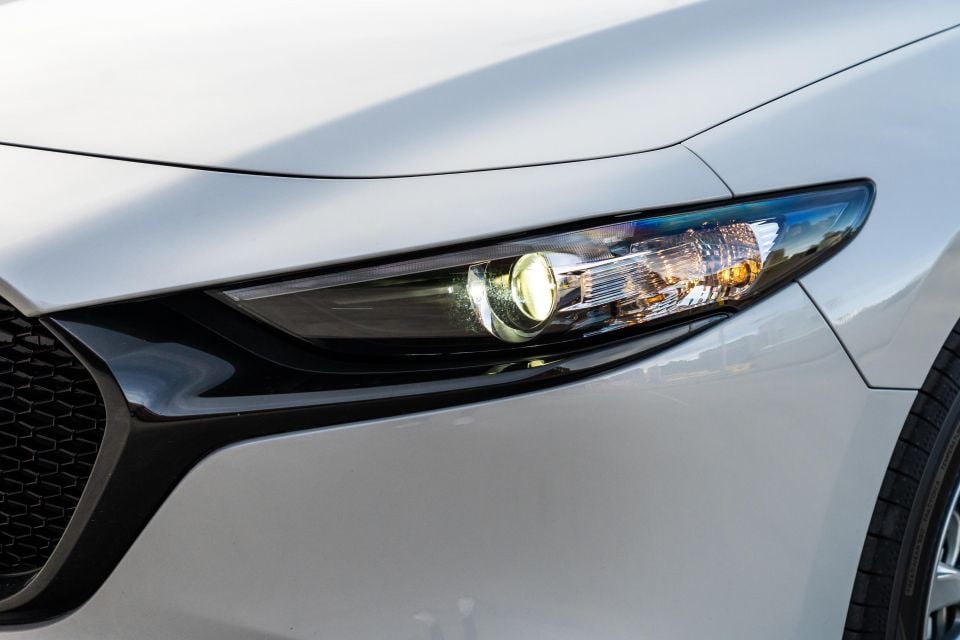


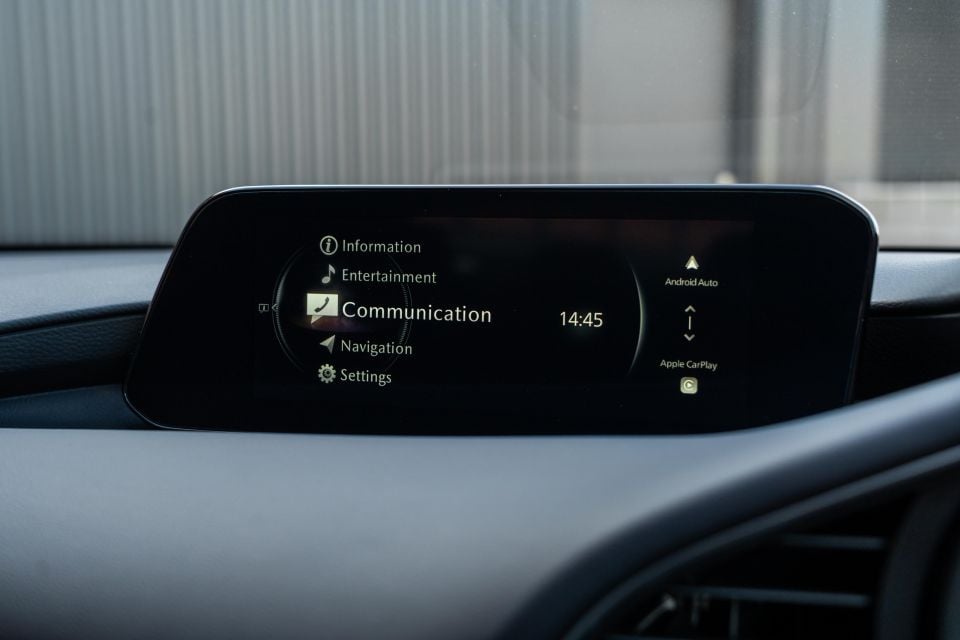
Where expert car reviews meet expert car buying – CarExpert gives you trusted advice, personalised service and real savings on your next new car.
Standard equipment includes:
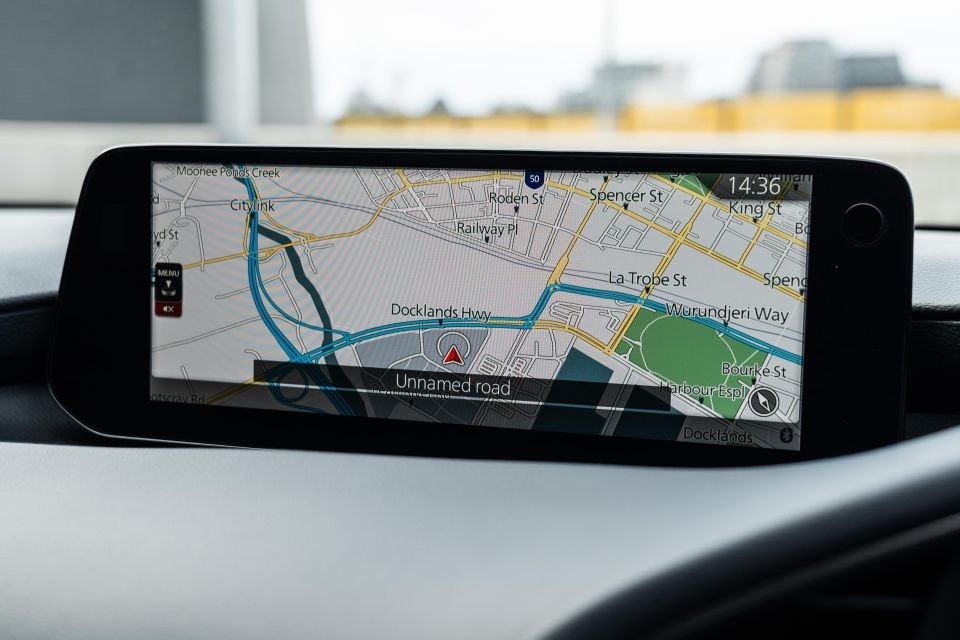
A revised Vision Technology Package, now priced at $2000, includes a 10.25-inch infotainment screen with touch functionality for the wireless Android Auto and Apple CarPlay.
It also includes a range of features typically hard to find at this price point, such as:
Even without this package, which wasn’t on our test car, the list of standard kit stacks up fairly well against rivals.
The i30 Elite is the value play at this price point, including leather upholstery, dual-zone climate control, proximity entry, lane centring and a wireless charging pad, although no LED headlights. But, Hyundai is pausing orders ahead of the arrival of a European-sourced model that will use a different powertrain and likely come at a higher price.
The Mazda 3 has a five-star ANCAP safety rating from 2019, with scores of 98 per cent in adult occupant protection, 89 per cent in child occupant protection, 81 per cent in vulnerable road user protection, and 76 per cent in safety assist.
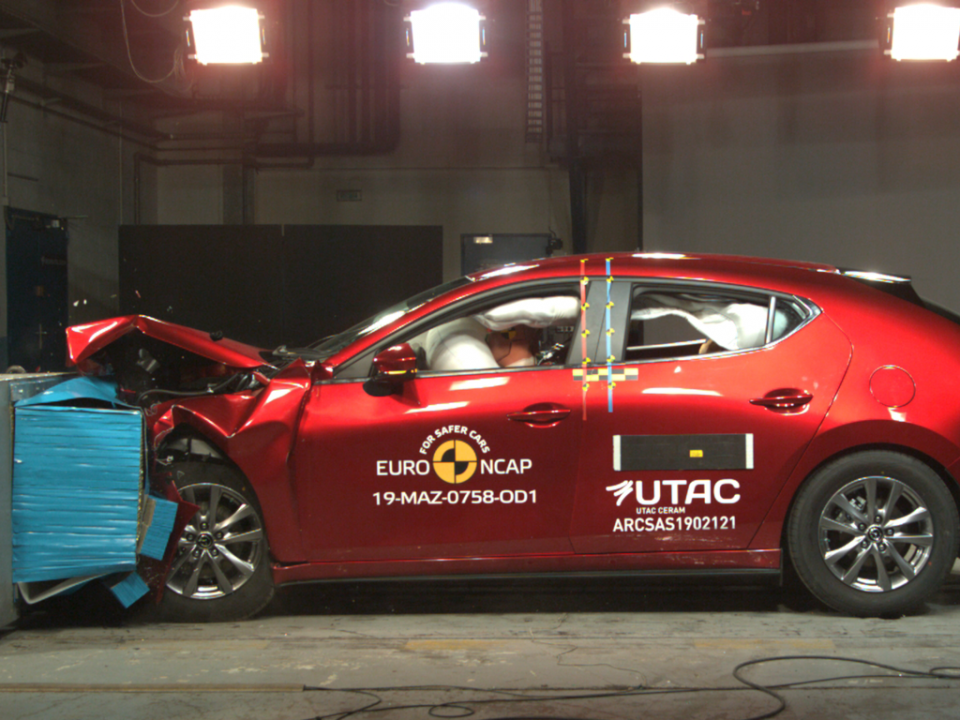
All 3 models come standard with the following safety features:
The Mazda 3 is backed by a five-year, unlimited-kilometre warranty.

Mazda has extended its servicing intervals to 12 months or 15,000km, and offers capped-price servicing for the first seven years or 105,000km. These services are capped at $334, $530, $414, $530, $334, $609 and $334, respectively, or $3085 over seven years.
Toyota offers more affordable capped-price services, but fewer of them; the Corolla’s first five services are capped at $245 each.
Hyundai offers more capped-price services and costs less over a seven-year period ($2409), while Kia matches the Mazda’s seven years but costs fractionally less ($2957).
Like Toyota with its latest Corolla Hatch, Mazda has made some compromises with the 3 that seem destined to steer buyers towards more practical crossovers in their range.
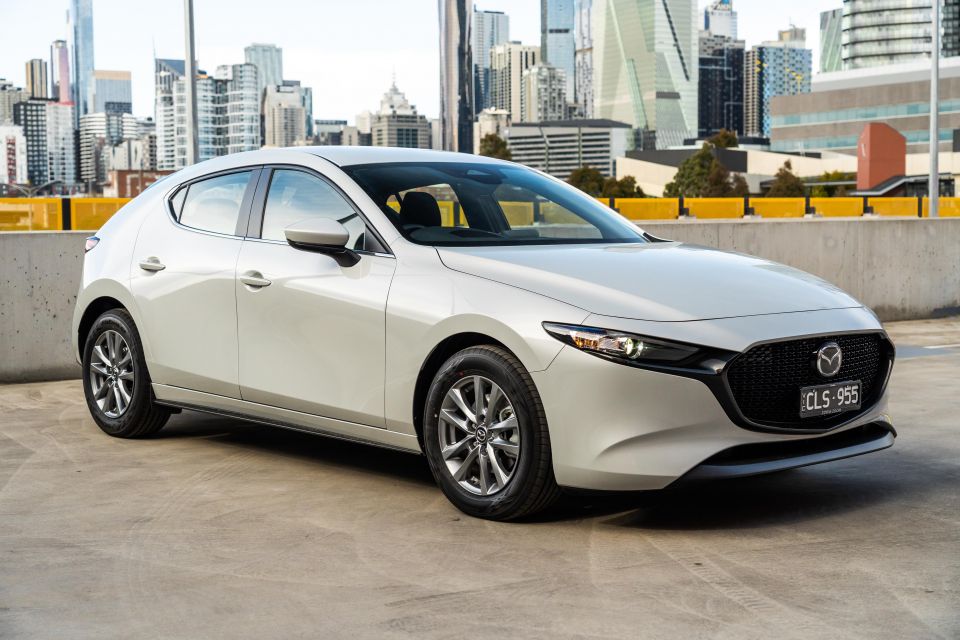
Rear-seat accommodation and boot space is better than the Toyota, mind you, but far from class-leading. The firm ride and somewhat heavy steering makes the 3 less commuter-friendly than it could be, even if it makes it a more engaging steer.
But the Mazda 3 has a distinctive (if polarising) shape, while those sitting up front will enjoy the nicest cockpit in this segment. The list of standard equipment is solid, and the optional Vision Technology package adds a lot of worthwhile inclusions that are hard to find at this end of the market.
If you’re not married to the idea of buying a hatchback, we’d steer you towards the classy sedan which has a more inviting back seat. The CX-30 can also be had for not much more money, but if you’re not using it as a family vehicle, the Mazda 3 hatch remains an impressive package even in base trim.

Click the images for the full gallery
MORE: Everything Mazda 3
Where expert car reviews meet expert car buying – CarExpert gives you trusted advice, personalised service and real savings on your next new car.
William Stopford is an automotive journalist with a passion for mainstream cars, automotive history and overseas auto markets.


CarExpert.com.au
3 Days Ago


Damion Smy
5 Days Ago


Damion Smy
8 Days Ago
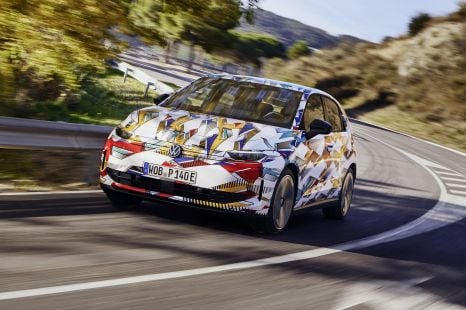

William Stopford
11 Days Ago
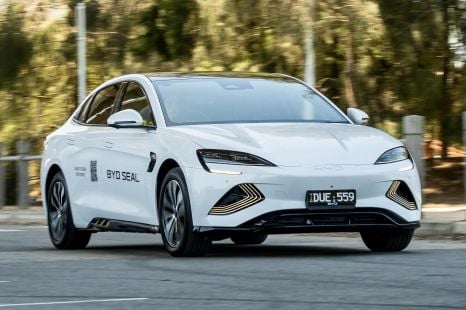

Max Davies
12 Days Ago
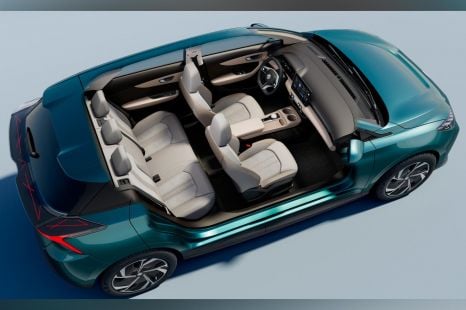

William Stopford
13 Days Ago